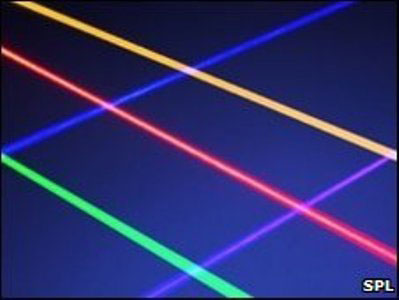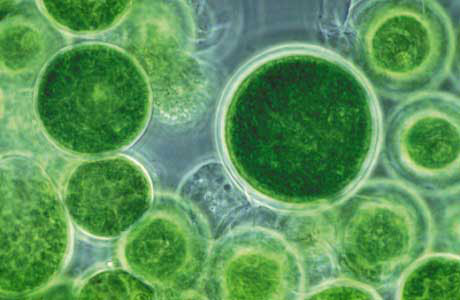Color lasers can stop brain activity
A study has suggested that color light can stop brain activity, which is used to treat brain disorders such as epilepsy.

Color lasers can control brain signals.
The Massachusetts Institute of Technology (MIT) team discovered a way to suspend brain activity using flashes of blue and yellow lasers. In this way, it is possible to suspend the activity of nerve cells that generate abnormal electrical brain signals that cause seizures.
This can help professionals better understand how the brain works and set the most basic treatment goals.
This treatment relies on how to act on two genes that need light to produce energy, which are found in natural organisms such as algae.
Shining
These genes, called Arch and Mac, contain genetic code for light-activated proteins

Arch and Mac are two genes that regulate protein activation by light in algae.
The MIT team used genetic engineering to apply two Arch and Mac genes to brain cells.
In this way, they controlled the mouse and monkey brain cells by light.
Light activates proteins to slow down the brain and prevent them from generating signals. Arch reacts to blue light and Mac responds to yellow light and both recover afterwards.
Currently, scientists plan to have a thorough examination of the pathways of the electroencephalogram to identify the goals of being suspended that can stop seizures as well as other diseases such as Parkison (paralysis ) or chronic pain.
Ed Boyden, the lead researcher, said that silencing different nerve cells with different light colors allows us to understand how the color of light works together to perform the functions of brain.
He said that these tools can help us understand how to control brain electrical activity, which will provide new insights and treatments for brain disorders. Although research has only been conducted on animals, it is a step forward for human use.
Professor Gero Miesenbock of Oxford used a similar technology in his research on memory formation in fruit flies. He said the technology began to bring insights that were previously unprecedented about the structure and adjustment of nerve electrophoresis and the link between cellular activity and how to react.
- Brain activity indicates favorite music
- First map of brain activity
- America develops algorithms to monitor moods through brain activity
- Can you guess what color this is? Blue or green?
- The brain compensates for the loss of vision
- How does room color affect health?
- Video: People control other organisms brain
- Phone changes brain activity
- The brain also emits music
- 10 strange things of the brain
- Smart phones alter brain activity
- A lot of brain activity helps prevent Alzheimer's disease
 Green tea cleans teeth better than mouthwash?
Green tea cleans teeth better than mouthwash? Death kiss: This is why you should not let anyone kiss your baby's lips
Death kiss: This is why you should not let anyone kiss your baby's lips What is salmonellosis?
What is salmonellosis? Caution should be exercised when using aloe vera through eating and drinking
Caution should be exercised when using aloe vera through eating and drinking Does exercising our minds a lot help us burn excess calories?
Does exercising our minds a lot help us burn excess calories?  How did Egyptian mummies remove the brain from the body?
How did Egyptian mummies remove the brain from the body?  Shocking evidence that near-death experiences are real in people who have had cardiac arrest
Shocking evidence that near-death experiences are real in people who have had cardiac arrest  AI has been able to accurately reproduce more than 80% of images in the human brain.
AI has been able to accurately reproduce more than 80% of images in the human brain.  Neuralink tests controlling a robotic arm with thoughts
Neuralink tests controlling a robotic arm with thoughts  Elon Musk's ambition to merge humans with AI
Elon Musk's ambition to merge humans with AI 